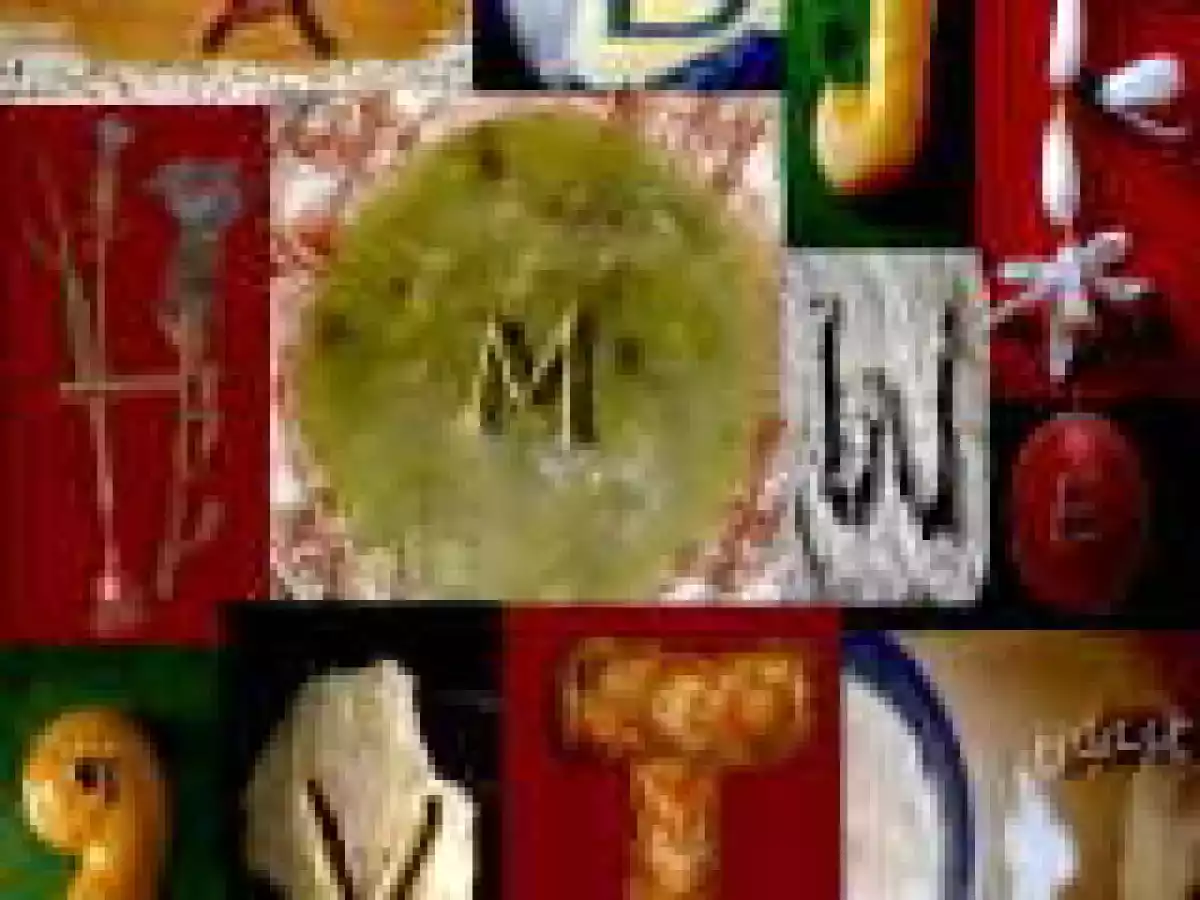LENTEN FAST- EASTER FEAST: ALMOST AN ALPHABET


Angel hair soup: with angel hair pasta, chopped potatoes, tomatoes, carrots, onions, lentils, bay leaf, without olive oil. It is eaten during Good Friday.
Derbiye: though the word in Arabic (tarbiya) and Turkish (terbiye) is applied to egg-lemon sauce, in Greek derbiye refers to a flour and lemon sauce that is used as a thickener, especially in chickpeas, black eyed beans, salted cod and artichoke dishes. In Casos, the term derbiye is used for the dish that is eaten on the Easter Sunday morning after the midnight church service. It is made with the offals, head and legs of the Easter Sunday lamb, rice and onions.
Egg, red: it symbolizes birth and rebirth, long life and immortality and hence Christ?s Ressurection. The red colour of Easter eggs links Jewish and Christian tradition. It reminds the lamb?s blood with which Jews marked their houses and signifies the blood of Christ. The cracking of the eggs was known in Byzantium by 13th century. It symbolizes the breaking of the tomb, but it is also a wish for a new, better life issuing from Christ?s Ressurection, though the owner of the last uncracked egg is considered very lucky.
Flowers: in islands, the Easter cookies are covered with orange and lemon flowers before being stored in tightly closedcontainers. Homebakersenjoyalsotheflavoringoforangeor lemon flower water in their Easter baking.
Garlic: chopped fresh garlic, olives, soaked broad beans and rusks soaked in water is an easy dish to make and a favorite meze or appetizer with raki and ouzo.
Hyakinth: the bulbs of the genus Muscari comosumare pickled and then served with virgin olive oil and fresh chopped onions. A Lenten delicacy.
Intestines: well washed lamb intestines are used for kokoretsi and mayiritsa.
J:a common shape for Easter cookies in Crete.
Kokoretsi:it is traditionally consumed in mainland Greece, where is the main appetizer on Easter Sunday table. Though it is related with Easter period it can be found all year round. Small pieces of lamb?s liver, lungs, heart, kidneys, spleen, suet are pierced on a skewer and covered by well washed small intestine wound around. Kokoretsi is roasted over charcoals and served chopped and sprinkled with salt, pepper and oregano.
Lamb: it is the traditional Easter meat served throughout Greece. Spit-roast lamb (mainland Greece), lamb (or goat) stuffed with rice and herbs and then baked (Aegean islands), baby lamb fed on its mother milk cooked with artichokes in egg-lemon sauce or baked with potatoes (Crete), lamb-pie (W. Crete) etc. are delicacies enjoyed during Easter Sunday lunch.
Mayiritsa: It is egg-lemon soup made with Easter lamb offal and optional chopped lettuce and /or rice. Mayiritsa is eaten in mainland Greece, early on the Easter Sunday morning.
Olive oil: on most days of Holy Week no olive oil is permitted in the cooking.Pulses: they are much eaten during Lent in a array of delicious dishes, soaked in water or boiled or cooked with or without olive oil.
q:another shape for Eastern cookies.
Roe of cod: it is the basic ingredient of taramosalata, a favorite meze traditionally eaten during Lent, though is found all year round.
Sesame seeds: they are sprinkled on the Easter cheese and meat pies and on the surface of layers of fyllo dough for sesamopita, a delightful syrup pie.
Tsoureki, sing. tsourekia, pl. (also known as lambropsomo = bright bread): though the word derives from Turkish çörek, this brioche- like bread is the traditional bread of Easter. It is baked on Good Friday and a red egg is placed in its center symbolizing the resurrection of Christ and the eternal life.
Voutyro: butter, in Greek. One of the basic ingredients used in the making of Greek Easter cookies and tsourekia.
Wheat flour: it is used for baking Easter cookies, tsoureki - traditional sweet bread for the Easter- and savory and sweet cheese pies.
Yeast:sour dough starter, brewer?s yeast and chemical yeast (baking powder)- or a combination of these- are used to make Easter cookies and tsourekia light and fluffy.
Comments